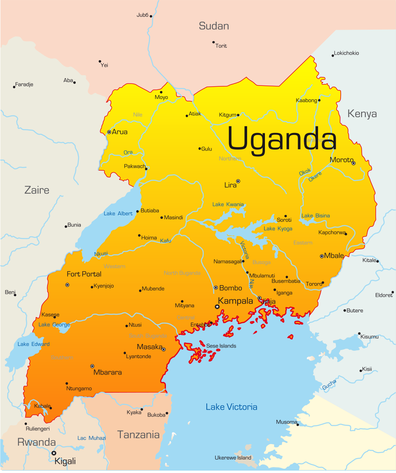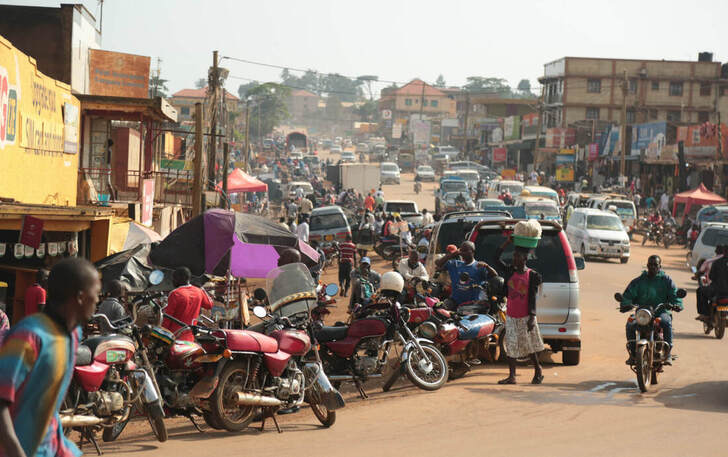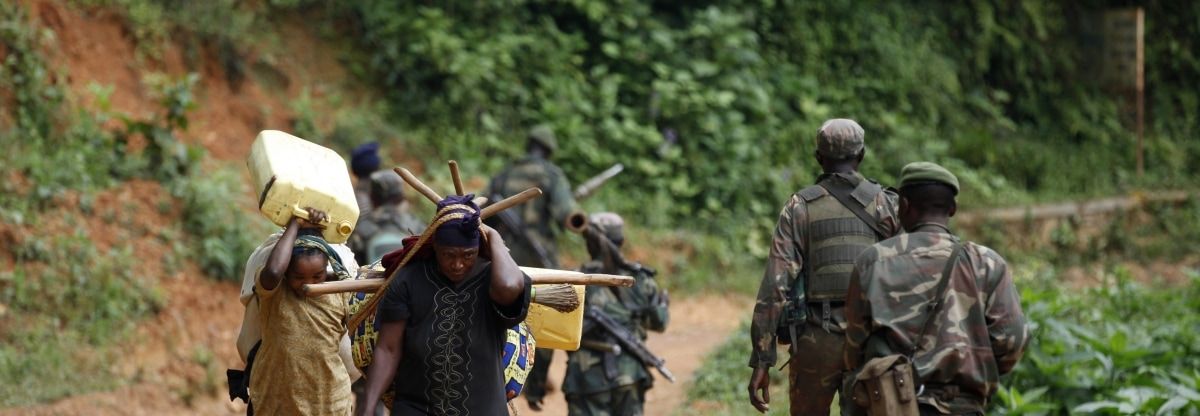Profile: Uganda
48,582,334
Projected Population in 2023
+2,000,000
Over 2 million orphans in Uganda
60%
60 Percent of Uganda's population are
minors and 15% are orphans
minors and 15% are orphans
Facts:
|
Population: 40,853,749
Ethnic Groups:
|
Languages: English (official language, taught in schools, used in courts of law and by most newspapers and some radio broadcasts), Ganda or Luganda (most widely used of the Niger-Congo languages and the language used most often in the capital), other Niger-Congo languages, Nilo-Saharan languages, Swahili (official), Arabic
Religions: Protestant 45.1% (Anglican 32.0%, Pentecostal/Born Again/Evangelical 11.1%, Seventh Day Adventist 1.7%, Baptist .3%), Roman Catholic 39.3%, Muslim 13.7%, other 1.6%, none 0.2% |
Demographic Profile: Uganda has one of the youngest and most rapidly growing populations in the world; its total fertility rate is among the world’s highest at 5.8 children per woman. Except in urban areas, actual fertility exceeds women’s desired fertility by one or two children, which is indicative of the widespread unmet need for contraception, lack of government support for family planning, and a cultural preference for large families. High numbers of births, short birth intervals, and the early age of childbearing contribute to Uganda’s high maternal mortality rate. Gender inequities also make fertility reduction difficult; women on average are less-educated, participate less in paid employment, and often have little say in decisions over childbearing and their own reproductive health. However, even if the birth rate were significantly reduced, Uganda’s large pool of women entering reproductive age ensures rapid population growth for decades to come.
Unchecked, population increase will further strain the availability of arable land and natural resources and overwhelm the country’s limited means for providing food, employment, education, health care, housing, and basic services. The country’s north and northeast lag even further behind developmentally than the rest of the country as a result of long-term conflict (the Ugandan Bush War 1981-1986 and more than 20 years of fighting between the Lord’s Resistance Army (LRA) and Ugandan Government forces), ongoing inter-communal violence, and periodic natural disasters. Uganda has been both a source of refugees and migrants and a host country for refugees. In 1972, then President Idi AMIN, in his drive to return Uganda to Ugandans, expelled the South Asian population that composed a large share of the country’s business people and bankers. Since the 1970s, thousands of Ugandans have emigrated, mainly to southern Africa or the West, for security reasons, to escape poverty, to search for jobs, and for access to natural resources. The emigration of Ugandan doctors and nurses due to low wages is a particular concern given the country’s shortage of skilled health care workers. Africans escaping conflicts in neighboring states have found refuge in Uganda since the 1950s; the country currently struggles to host tens of thousands from the Democratic Republic of the Congo, South Sudan, and other nearby countries. |
Uganda is one of the world's least developed and resource-poor countries
|
It has endured the scourge of civil war and the deadly AIDS epidemic, causing an environment where an estimated 85% of Uganda’s population live in rural areas with 60% of its total population being children. Of those children, it is estimated that at least 15% are orphans. Very few of any of these children have access to an education. According to www.avert.com, “AIDS has had a devastating impact on Uganda. It has killed approximately one million people, and significantly lowered life expectancy. AIDS has reduced the country’s labor force, reduced agricultural output and food security, and weakened educational and health services. The large number of AIDS related deaths amongst young adults has left behind over a million orphaned children.”
Due to rampant malnutrition, thousands of children suffer from stunted growth, disease and the ravages of neglect. While some children are able to remain with grandparents or other family members, that is not always ideal. Often these relatives neglect the children or use them as servants for the rest of the household. At times these abuses are so flagrant children are forced to flee. They have nowhere to go but into the streets where they often become thieves, prostitutes and drug addicts. Ultimately, many become infected with AIDS (HIV) … and the cycle of hurt and pain continues.
|
|
Currently, 1.4 million people are living with HIV (2021 UNAIDS) An estimated 62,000 people died from AIDS in 2011 and 1.1 million children have been orphaned by Uganda's devastating epidemic. HIV prevalence has been rising since its lowest rate of 6.4 percent in 2006. New infections are diagnosed in 150,000 people a year, of whom 20,600 are children. Despite this, the 2012 life expectancy of 55 years is nine years higher than the expectancy in 2000, likely to be a result of greater access to treatment for people living with HIV. Uganda’s current population is about 32.7 million (last census 2010), with 50% being under the age of 14. The Sub-Saharan African nation has more than 2.3 million children orphaned due to AIDS-related deaths. With a total population of more than 30 million, Uganda has the highest proportion of AIDS orphans of any country in the world.
Though Uganda now has a stable government, it is still crippled by debt, lack of industry, and the AIDS crisis. Therefore, the government is unable to support services to rescue its children. Churches and international relief agencies are vital to confront this crisis on a daily basis.
Though Uganda now has a stable government, it is still crippled by debt, lack of industry, and the AIDS crisis. Therefore, the government is unable to support services to rescue its children. Churches and international relief agencies are vital to confront this crisis on a daily basis.




